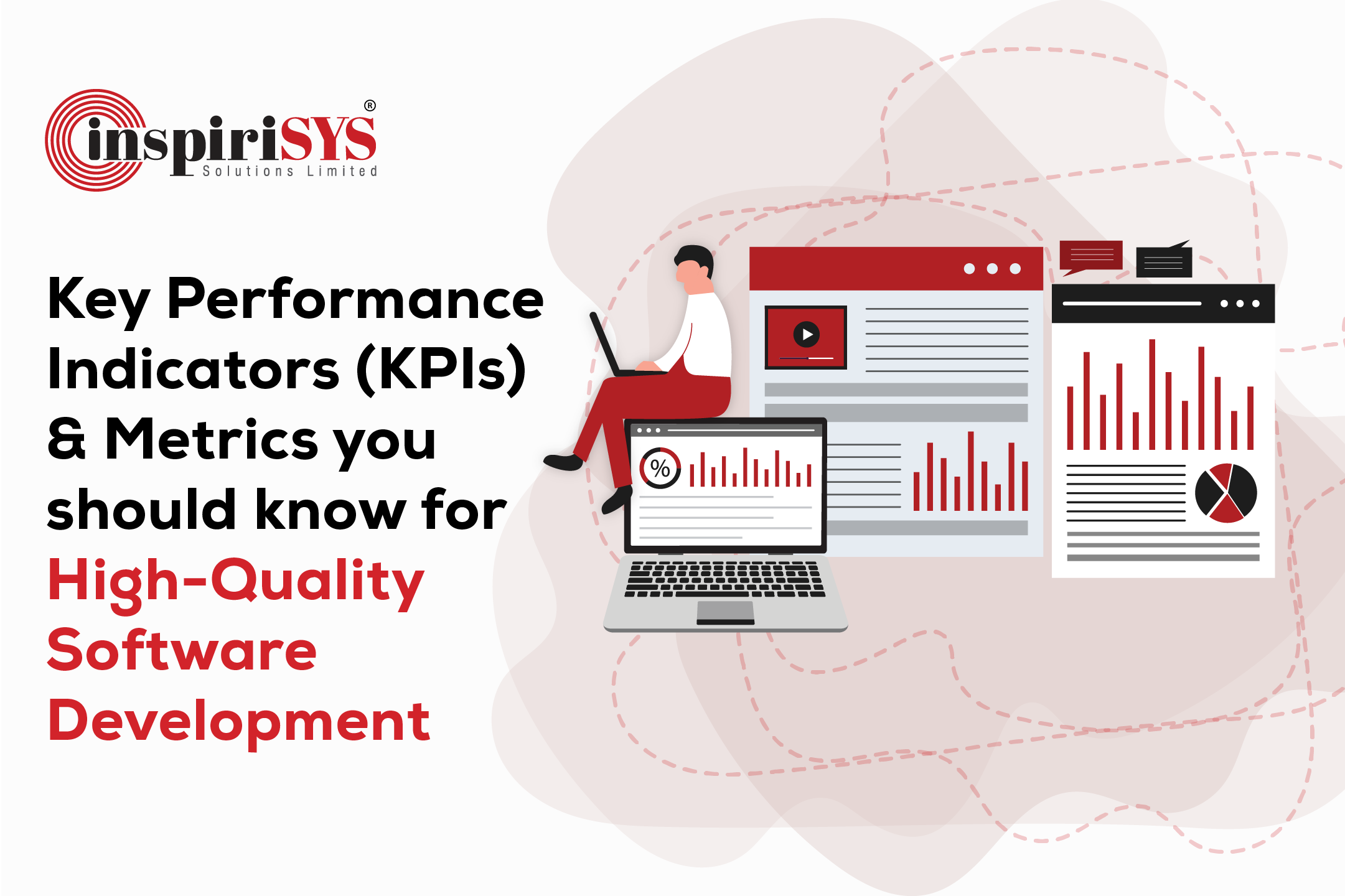The effectiveness of software development management mainly depends upon the successful attainment of KPIs and development metrics. As the development process for technical teams is increasingly becoming more complex, the key performance indicators (KPIs) prove to be more useful in tracking progress within a software project. Following the right KPIs not only helps managers to monitor the progress of a project but also keeps an eye on the performance and output quality produced by their team.
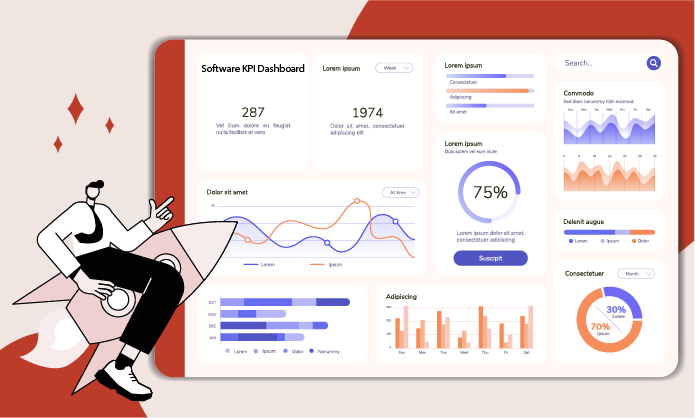
KPIs have proven to be vital for the software development process. This blog will list the best KPIs that you should look into when you outsource your software development projects or build in-house software.
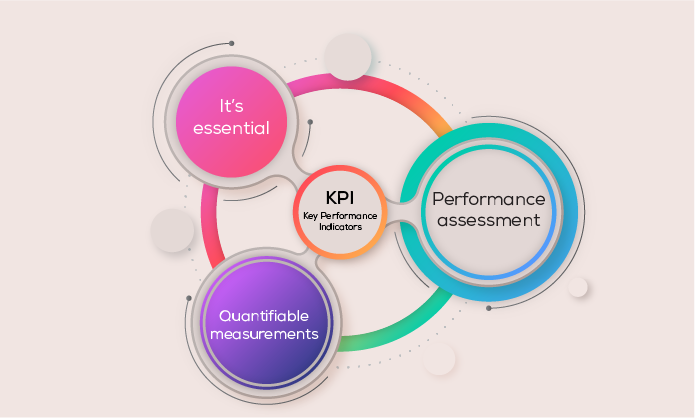
The mass adoption of agile methodology for better development of software has been complemented with KPIs that pinpoint problems during development. A clear understanding of the different phases in developing a software project is crucial and here is everything you need to know about development metrics and KPIs.
What are Key Performance Indicators (KPIs) in Software Development
First things first, let’s clearly understand what role KPIs play in software development.
Software development teams often struggle to find effective ways to track and measure success. To be more precise, setting goals, and tracking the progress towards those goals is of utmost importance for keeping a project in line. This is where key performance indicators, or KPIs, can help. KPIs are values that measure the performance of a specific business or software development project. They act as crucial checkpoints that indicate whether a company is meeting its goals by providing an easy way to monitor successes or setbacks.
KPIs in software development allow leaders to make data-based decisions about the future of their projects while also giving developers an idea of what kind of outcome they should be achieving. Having clear KPIs in place allows software development teams to set realistic goals and gain reliable insights into how well they are performing concerning these goals. Consequently, through this type of strategic goal planning and management decision making companies can achieve greater success with minimum effort and cost.
Importance of KPIs and Metrics
Key Performance Indicators (KPIs) are important for several reasons:
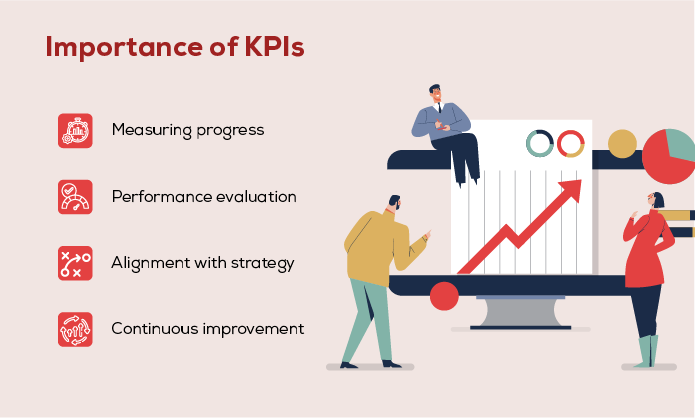
- Measuring progress: KPIs help in measuring progress towards achieving specific goals and objectives. With the practice of tracking KPIs, companies have more chances to identify areas where they can improve and areas that need extra attention. This allows them to make informed decisions and take corrective actions as needed.
- Performance evaluation: KPIs provide means of evaluating the performance of individuals, teams, and departments within an organization. By setting clear performance targets and measuring performance against those targets, organizations will not only be able to identify high-performing employees and teams, but also identify areas where performance needs to be improved.
- Alignment with strategy: KPIs help to ensure that individual goals and objectives are aligned with the overall strategy of the organization. By setting KPIs that are directly linked to strategic objectives, organizations can ensure that everyone is working towards the same goals and objectives.
- Continuous improvement: With KPIs, there is a way to track progress toward continuous improvement. By setting KPIs that are challenging but achievable, organizations can encourage employees to strive for excellence and continuously improve their performance over time.
Top KPIs in software engineering
Many KPIs can be used in software engineering to measure performance and evaluate progress. However, only some of the most important KPIs help your software engineering project be on target. Here are some of the KPIs to follow up on during software development.
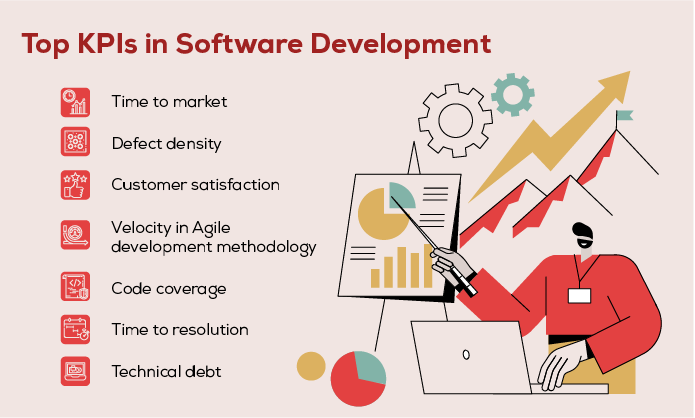
- Time to market: Our first KPI measures the time it takes to develop and release a software product or feature. It is a critical KPI in today's fast-paced business environment, where companies need to quickly respond to changing customer needs and market conditions. A shorter time to market can give a company a competitive advantage by allowing it to release new products or features before its competitors.
- Defect density: Next, the defect density KPI measures the number of defects or bugs in a software application per unit of code. It is an important measure of software quality, as defects can lead to customer dissatisfaction, increased support costs, and lost revenue. A lower defect density indicates that the software is of higher quality and is less likely to cause problems for users.
- Customer satisfaction: This KPI measures the satisfaction of customers with a software product or service. It is an important driver of customer loyalty and repeat business, as happy customers are more likely to recommend a product or service to others. A high level of customer satisfaction can also indicate that the software is meeting the needs of the market and is comparatively better than other products or services in the market.
- Velocity in Agile development methodology: When using agile methodology, you can measure the rate at which a software development team can deliver working software features during a sprint or iteration. It is a key measure of the team's productivity and efficiency, as well as its ability to meet project timelines and deliverables. A higher agile velocity indicates that the team can deliver more value to the customer in a shorter amount of time, which can lead to better customer satisfaction and competitive advantage.
- Code coverage: The percentage of code that is covered by automated tests is measured with this KPI. It is an important measure of software quality, as automated tests can help to catch defects early in the development process before they can cause problems for users. A higher code coverage indicates that the software is more thoroughly tested and is less likely to have defects.
- Time to resolution: This KPI measures the time it takes to resolve defects or issues in a software application. It measures the efficiency of the development and support processes, as well as the team’s ability to quickly respond to customer issues. A shorter time to resolution indicates that the team can quickly identify and fix problems, which can lead to higher customer satisfaction.
- Technical debt: Our last KPI pick is to measure the amount of tech debt in a software application. Technical debt refers to the cost of maintaining and updating the software over time due to poor design or implementation decisions. A high level of technical debt can lead to higher support costs, longer development times, and reduced agility. By measuring technical debt, teams can identify areas of the code that may need to be refactored or redesigned to reduce long-term maintenance costs.
Software Development Metrics
Having mentioned the top KPIs you need to check while developing software, there are various types of software development metrics, including the aforementioned KPIs, that can be used to measure the performance of software development teams and evaluate the quality of software products. As a bigger picture, here are some of the most common types of software development metrics:
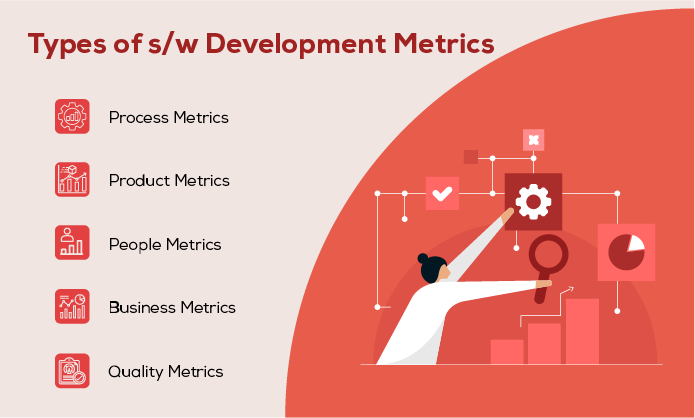
- Process Metrics: These metrics are used to measure the efficiency and effectiveness of the software development process. Examples of process metrics include cycle time, lead time, and throughput. Cycle time measures the time it takes to complete a single unit of work, such as a user story or feature. Lead time measures the time it takes to complete an entire project or release. Throughput measures the amount of work completed over a given period, such as a sprint or iteration.
- Product Metrics: Metrics used to evaluate the quality and functionality of the software product are referred to as product metrics. Examples of product metrics include defect density, code coverage, and maintainability index. Defect density measures the number of defects or issues in the software per unit of code. Code coverage is used to measure the amount of code that is taken care of by automated tests. The maintainability index measures the ease with which the software is maintained and modified over time.
- People Metrics: People metrics are used to evaluate the performance of the software development team and individual team members. Examples of people metrics include velocity, team satisfaction, and employee turnover. Velocity measures the rate at which the team can complete work during a sprint or iteration. Team satisfaction measures the level of satisfaction of team members with their work environment and job responsibilities. Employee turnover measures the rate at which team members are leaving the company or team, which can be an indicator of job satisfaction and team morale.
- Business Metrics: To evaluate the overall impact of software development on the business, there are effective business metrics that play a significant role. Examples of business metrics include revenue, customer satisfaction, and time to market. Revenue measures the financial impact of the software product or service on the company's bottom line. Customer satisfaction measures the level of satisfaction of customers with the software product or service. Time to market measures the speed at which the software product or feature is developed and released to the market, which can impact the company's competitiveness and market share.
- Quality Metrics: Quality metrics are used to measure the quality of the software product or service from a user's perspective. Examples of quality metrics include usability, reliability, and performance. Usability measures the ease with which users can interact with and navigate the software product or service. Reliability measures the ability of the software to perform consistently and without errors over time. Performance measures the speed and responsiveness of the software in processing user requests and data.
Conclusion
Remember that metrics should be chosen carefully, aligning with the project's goals and objectives, and used in a way that provides meaningful insights to guide decision-making and improvement efforts. Try to be clear on what your development process is going to comprise and be sure about the endpoint you want to reach. The metrics in this blog should be of help to all development teams that are looking to excel with their project at hand. All teams aim to build efficient software that will satisfy both customers and businesses. Hopefully, your team or the team you outsource follows the best KPIs for maximum results.


